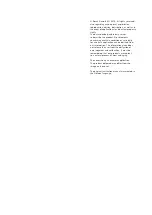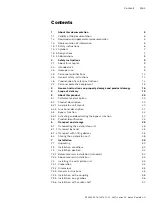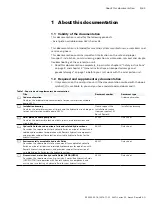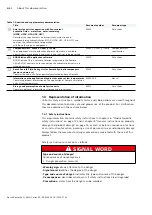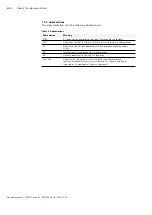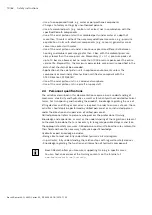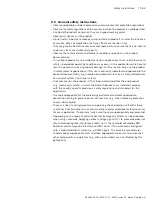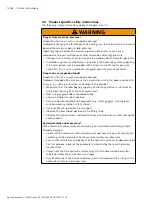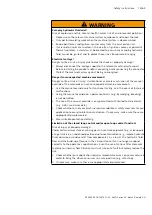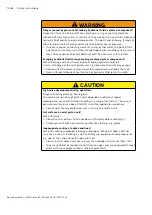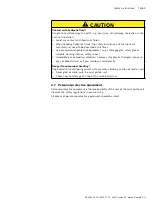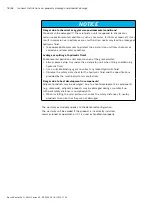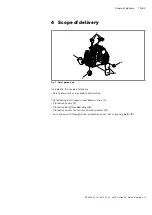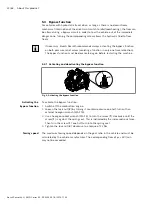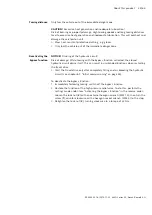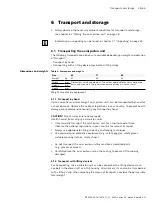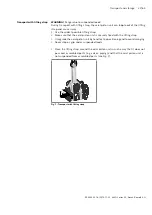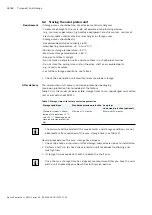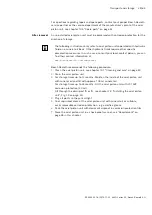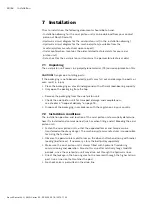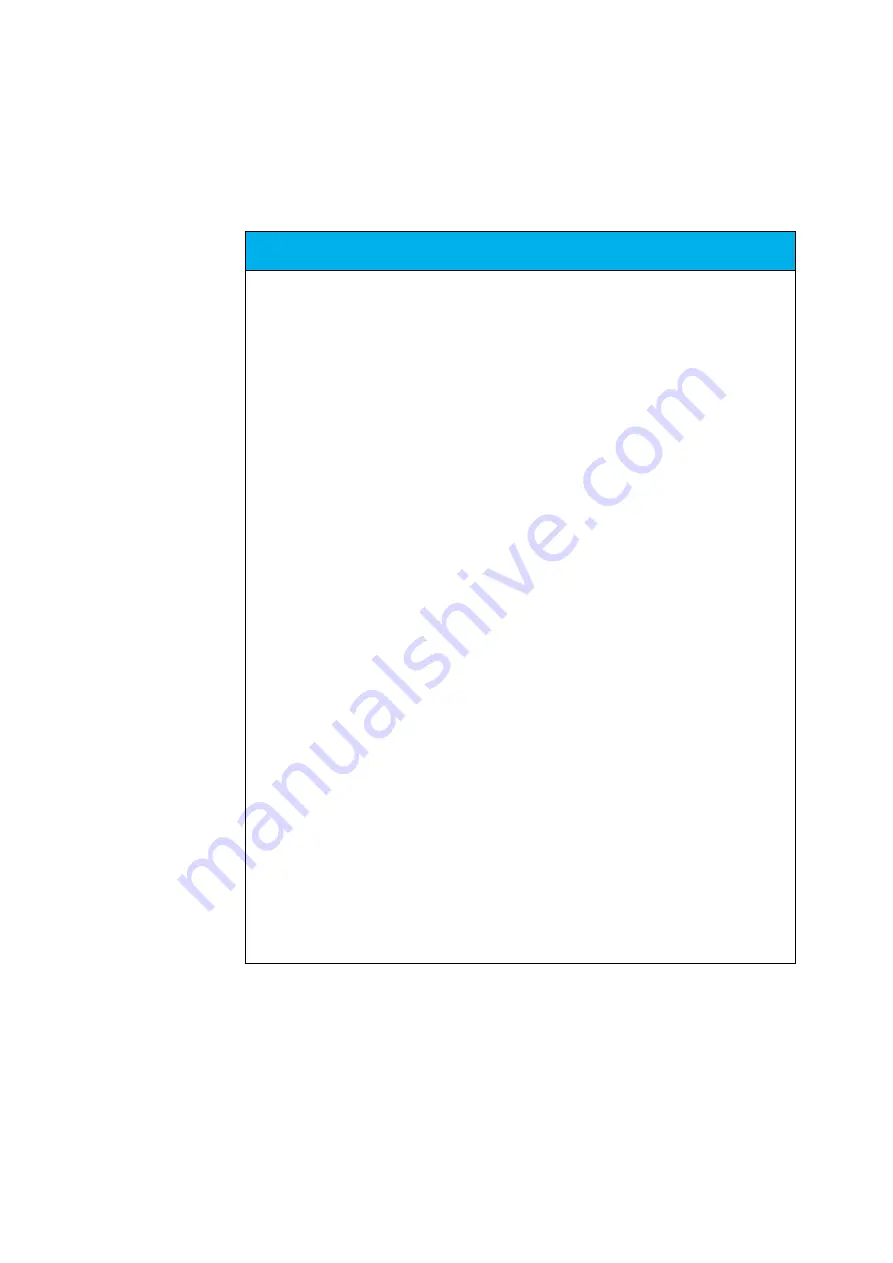
16/64
General instructions on property damage and product damage
Bosch Rexroth AG, A4VG Series 35, RE 92035-01-B/2019-11-25
3 General instructions on property
damage and product damage
The following notices apply to chapters 6 to 14.
NOTICE
Danger from improper handling!
Product can be damaged!
▶
Do not subject the product to improper mechanical loads.
▶
Never use the product as handle or step.
▶
Do not put/place any objects on the product.
▶
Do not strike the drive shaft of the axial piston unit.
▶
Do not set/place the axial piston unit on the drive shaft or assembled parts.
▶
Do not strike assembled parts (e.g. sensors. solenoids or valves).
▶
Do not hit sealing surfaces (e.g. on the work connections).
▶
Leave the protective covers on the axial piston unit until you connect the lines.
▶
Disconnect all electrical connectors before arc welding and painting operations.
▶
Ensure that the electronic components (e.g. sensors) are not electro-statically
charged (e.g. during painting operations).
Risk of property damage due to inadequate lubrication!
Product can be damaged or destroyed!
▶
Never operate the axial piston unit with insufficient hydraulic fluid. Specifically,
make sure that the rotary group has sufficient lubrication.
▶
When commissioning a machine/system, make sure that the housing area and
the working lines of the axial piston unit are filled with hydraulic fluid and
remain filled during operation.
▶
Check the hydraulic fluid level in the housing area regularly and recommission,
if necessary. For above-reservoir installation, the housing area may drain out
through the drain line after prolonged standstill periods (air enters through the
shaft seal) or through the working line (gap leakage). This means the bearings
are insufficiently lubricated when the system is turned on.
▶
Make sure the suction line is always filled with hydraulic fluid during
commissioning and operation.
Mixing hydraulic fluids!
Product can be damaged!
▶
Before installation, remove all fluids from the axial piston unit to prevent mixing
with the hydraulic fluid used in the machine/system.
▶
Any mixture of hydraulic fluids of different manufacturers and/or different types
of the same manufacturer is generally not permissible.

